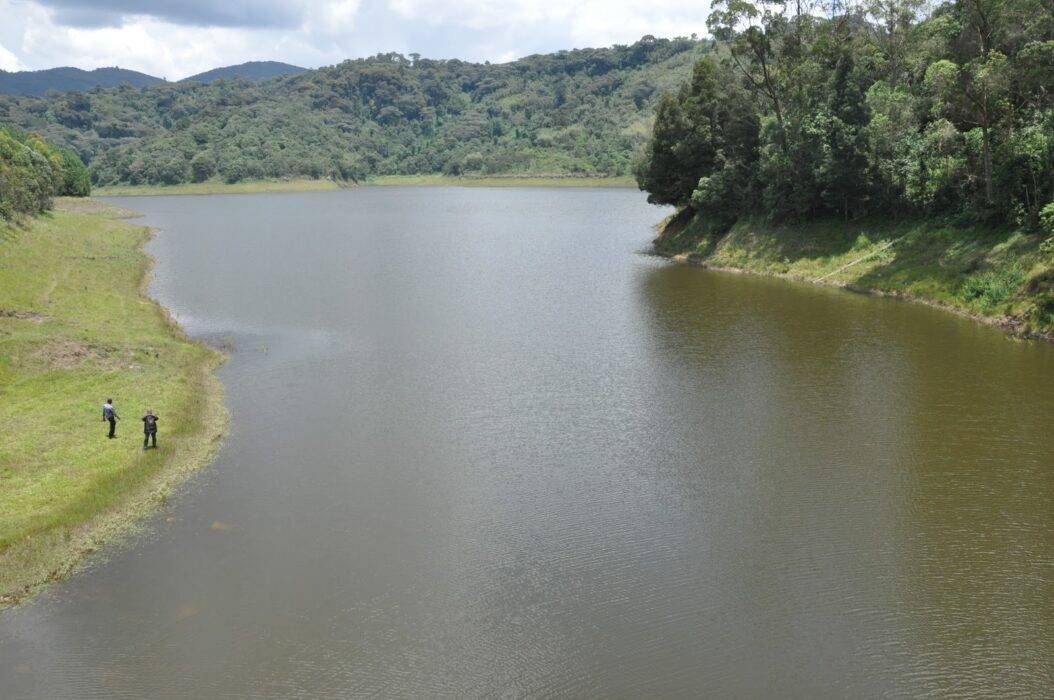In the heart of the green hills of northwestern Burundi lies an emblematic site that is at once industrial, historical and natural: Rwegura dam. A true symbol of Burundian know-how, it supplies a large part of the country with electricity while offering breathtaking panoramic views.
A site straddling three provinces
The Rwegura dam is strategically located between two hills, Sehe in the province of Cibitoke and Rugeyo in the Bubanza. It draws its energy from an artificial lake fed by several rivers: Gitenge from Kayanza, Mwokora from Cibitokeand several smaller tributaries that combine to form this vast water reservoir.
This unique geographical position makes Rwegura a meeting point between the provinces of Kayanza, Bubanza and CibitokeThis is a project that unites these regions around a single objective: energy production and local development.
A pioneering, historic power plant
Construction of the Rwegura dam began in 1984 at Masangoin the commune of Bukinanyana (Cibitoke province). Two years later, in 1986, the president Jean-Baptiste Bagaza inaugurated Burundi's first hydroelectric power station, marking a decisive step towards the country's energy independence.
Equipped with three machines, each capable of producing 6 megawatts, for a total capacity of 18 MW, it was a technological masterpiece in its day: a source of national pride and a driving force for development.
How it works: a well-orchestrated energy journey
Water from Lake Rwegura powers the power plant's turbines, generating a voltage of 6.6 kilovolts (KV). This voltage is then raised to 110 KV to reduce energy losses during long-distance transmission.
The electricity generated follows an impressive path: it is first sent to the Gahore substation in the province of Bubanzawhere it joins the current from Ruzizi II (Congo), then continues towards national dispatching located along the RN1, opposite the Roi Khaled hospital.
From there, the voltage is lowered to enable distribution to households throughout the country.
At the Rwegura substation, another transformer raises the voltage to 30 KV, making it possible to supply several northern and eastern provinces directly: Kayanza, Ngozi, Kirundo, Karuzi, Cankuzoand part of Bukinanyana (Cibitoke) and Musigati (Bubanza).
A landscape of rare beauty
Beyond its energy function, the Rwegura dam and its reservoir lake offer a landscape of striking beauty. The calm waters reflect the surrounding hills, while the dense vegetation lends the site an atmosphere of absolute tranquillity.
Nature lovers can observe the rich local flora and fauna, while history and technology enthusiasts will find a testimony to Burundi's industrial development.
The area around the lake is also ideal for hikes, educational tours and ecotourism excursions, particularly to the forest of Kibiraneighboring the site.
A heritage to preserve
Like any old infrastructure, the Rwegura power station faces challenges related to maintenance and variations in lake level during the dry seasons. Nevertheless, it remains a cornerstone of Burundi's electricity network and a symbol of the country's energy autonomy.
Its tourism and educational potential could be further enhanced through improved accessibility and local sustainable tourism initiatives, enabling visitors to discover this unique place while supporting the surrounding communities.
Conclusion
The Rwegura dam and reservoir represent much more than an industrial site: they embody the meeting of engineering, nature and Burundian history.
Between hills, rivers and innovations, Rwegura remains an emblem of national progress and a hidden gem to be explored by all those wishing to understand Burundi from a different angle.


There are no reviews yet. Be the first one to write one.